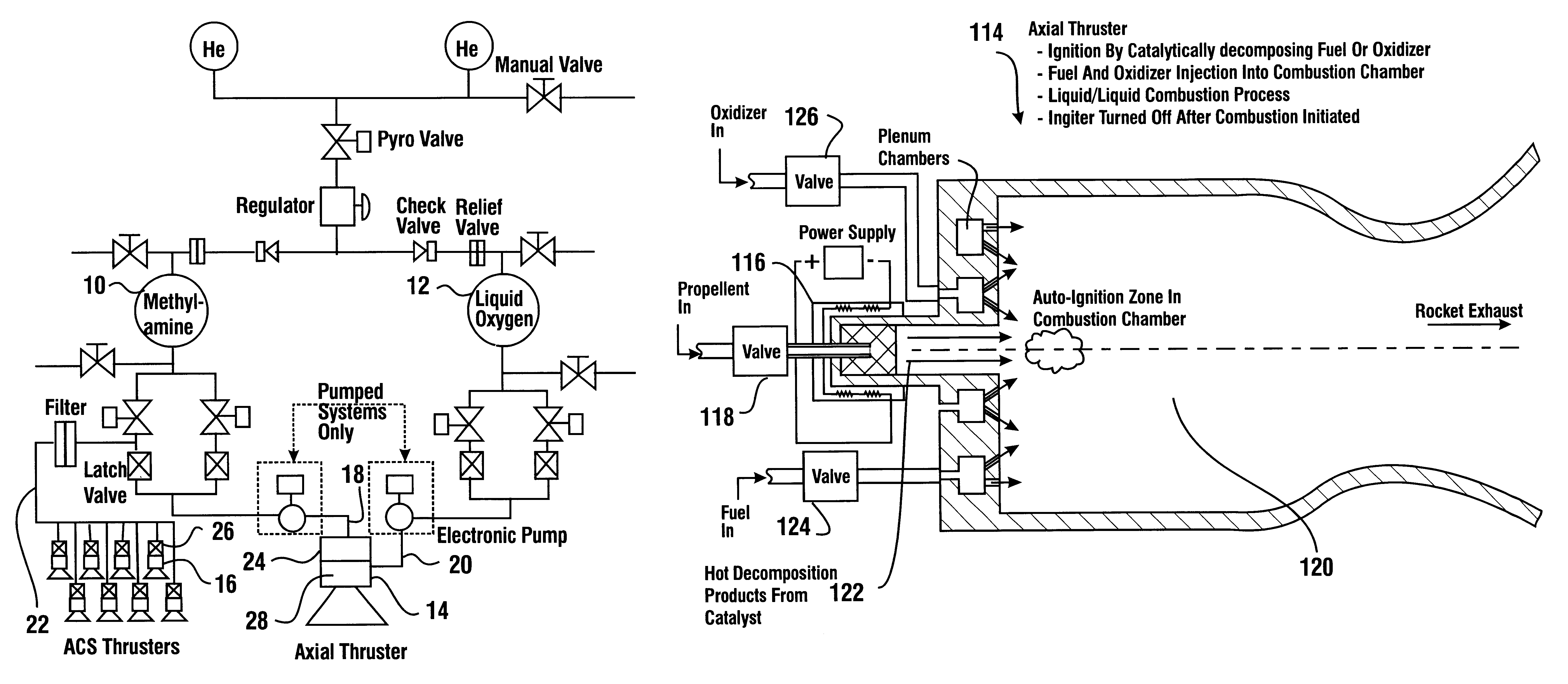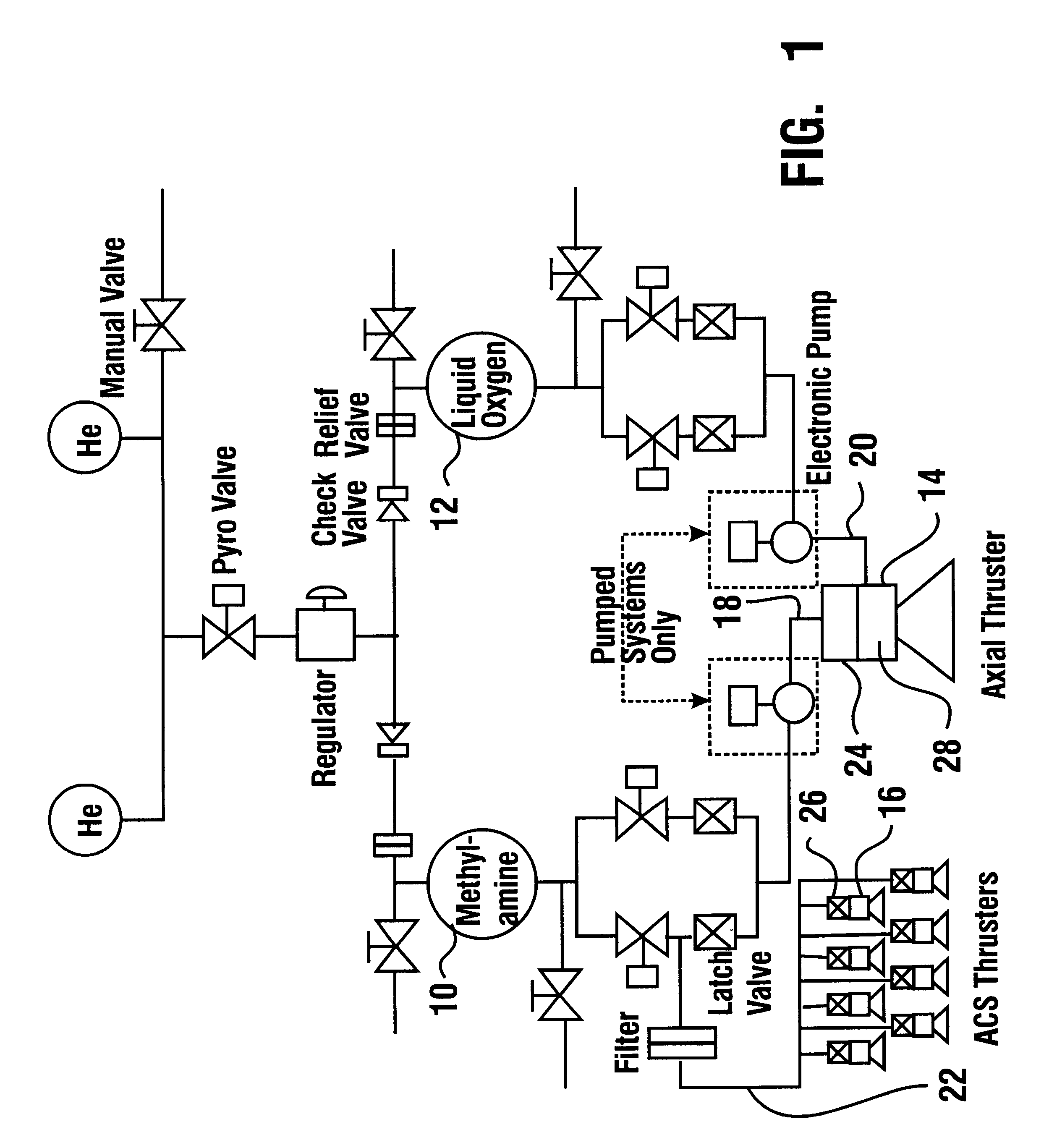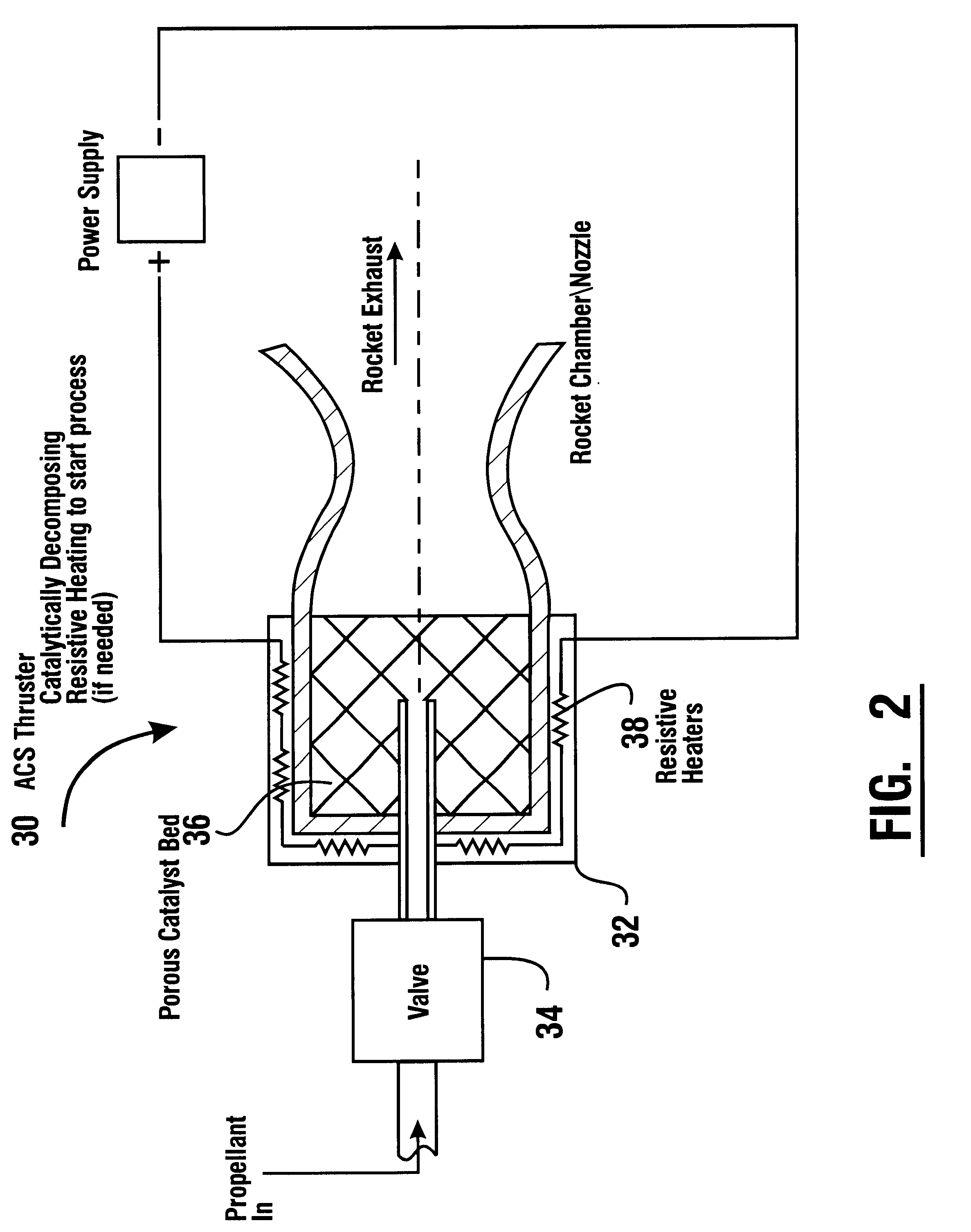Reduced toxicity fuel satellite propulsion system
- Summary
- Abstract
- Description
- Claims
- Application Information
AI Technical Summary
Benefits of technology
Problems solved by technology
Method used
Image
Examples
Embodiment Construction
Referring now to the drawings and particularly to FIG. 1, there is shown therein a reduced toxicity satellite fuel propulsion system schematic. The system is representative of a dual-mode propulsion system that includes both an axial thruster 14 for maneuvering the satellite and an ACS thruster 16 for stationkeeping. These thrusters are designed for different thrust classes (force generated during firing). The ACS thrusters are in a smaller thrust class than the axial thrusters because they are required to satisfy a minimum impulse-bit (thrust times time) requirement for precision pointing of the satellite.
The system includes two propellant supplies. The first propellant supply 10 in one preferred embodiment includes a reduced toxicity fuel such as methylamine. The second propellant supply 12 in one preferred embodiment includes an oxidizer such as liquid oxygen. The propulsion system includes means for selectively supplying the first propellant 18 and means for selectively supplyin...
PUM
 Login to View More
Login to View More Abstract
Description
Claims
Application Information
 Login to View More
Login to View More - R&D
- Intellectual Property
- Life Sciences
- Materials
- Tech Scout
- Unparalleled Data Quality
- Higher Quality Content
- 60% Fewer Hallucinations
Browse by: Latest US Patents, China's latest patents, Technical Efficacy Thesaurus, Application Domain, Technology Topic, Popular Technical Reports.
© 2025 PatSnap. All rights reserved.Legal|Privacy policy|Modern Slavery Act Transparency Statement|Sitemap|About US| Contact US: help@patsnap.com



